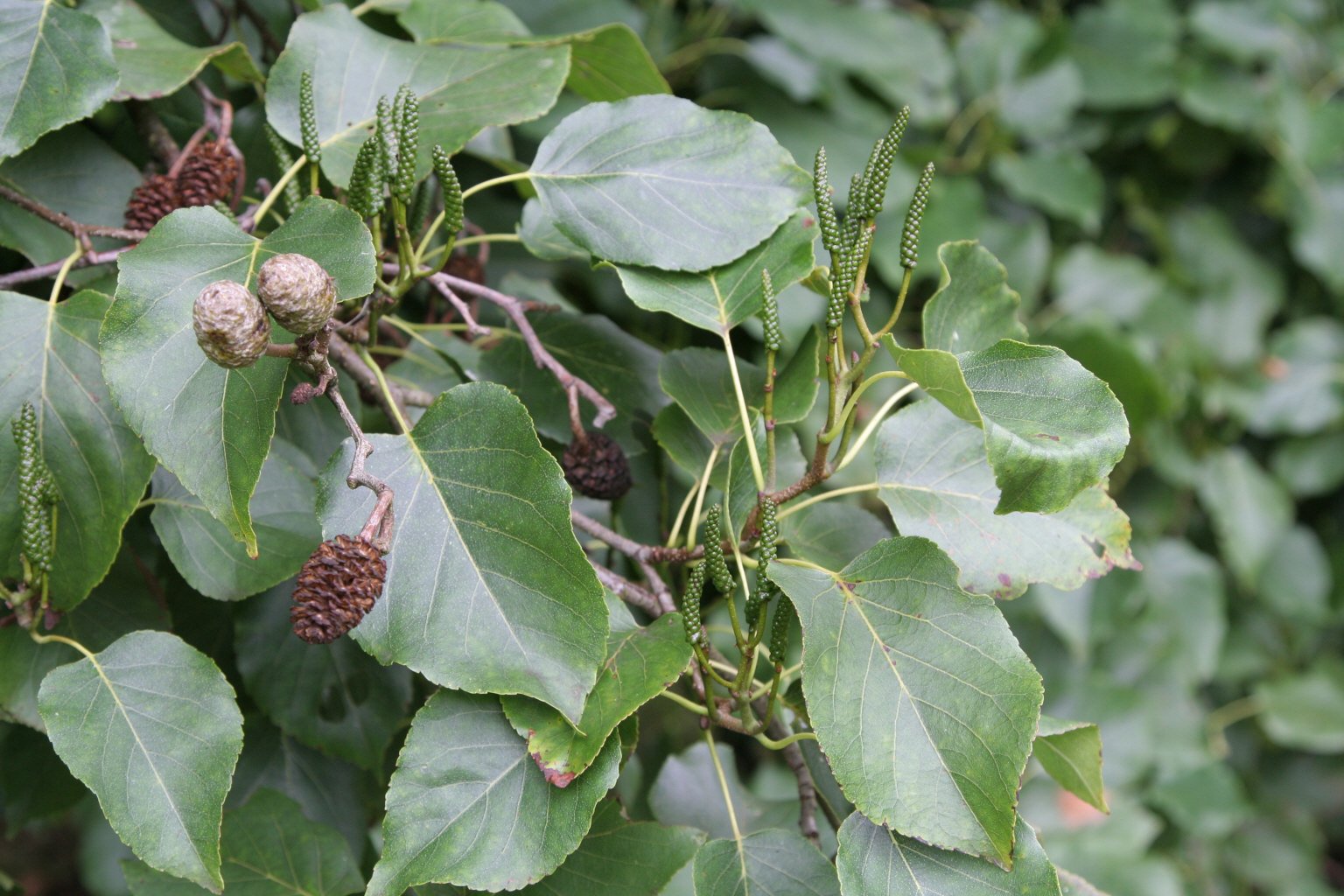Size
Ultimate height
Higher than 12 metresTime to ultimate height
20–50 yearsUltimate spread
4–8 metresGrowing conditions
Moisture
Moist but well–drained, ±Ę´Ç´Ç°ů±ô˛â–d°ů˛ąľ±˛Ô±đ»ĺpH
Acid, Alkaline, NeutralColour & scent
| Stem | Flower | Foliage | Fruit | |
| Spring | Green | |||
|---|---|---|---|---|
| Summer | Green | Brown | ||
| Autumn | Green | |||
| Winter | Yellow |
Position
- Full sun
Aspect
South–facing or North–facing or East–facing or °Â±đ˛őłŮ–f˛ął¦ľ±˛Ô˛µ
Exposure
Exposed or Sheltered Hardiness
H6Botanical details
- Family
- Betulaceae
- Native to GB / Ireland
- No
- Foliage
- Deciduous
- Habit
- Columnar upright
- Genus
Alnus are vigorous deciduous trees and large shrubs with rounded leaves and often conspicuous catkins in winter
- Name status
Correct
- Plant range
- Corsica & S Italy
How to grow
Cultivation
Thrives in fertile, moist but well-drained soil, but tolerates a range of conditions including poor drainage. Can make a fast-growing screen on wet sites. This genus is noted for its ability to thrive in poor, wet conditions and is widely used in land reclamation
Propagation
Propagate by seed or hardwood cuttings
Suggested planting locations and garden types
- Wildlife gardens
- Low Maintenance
- Hedging and screens
Pruning
Pests
May be susceptible to alder sucker and leaf-mining sawflies
Diseases
May be susceptible to Phytophthora and honey fungus
911±¬ÁĎ
911±¬ÁĎ is the UK’s leading gardening charity. We aim to enrich everyone’s life through plants, and make the UK a greener and more beautiful place.
